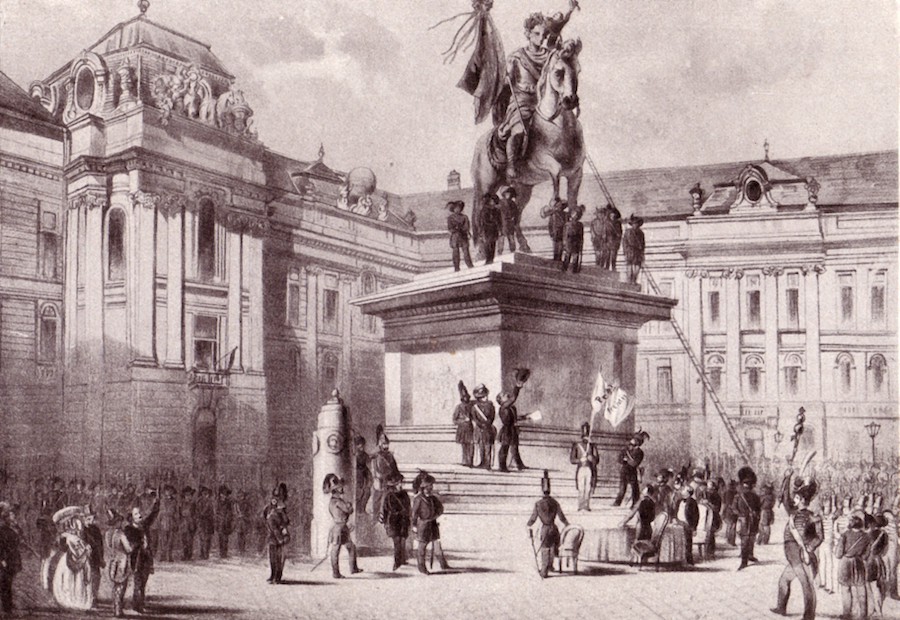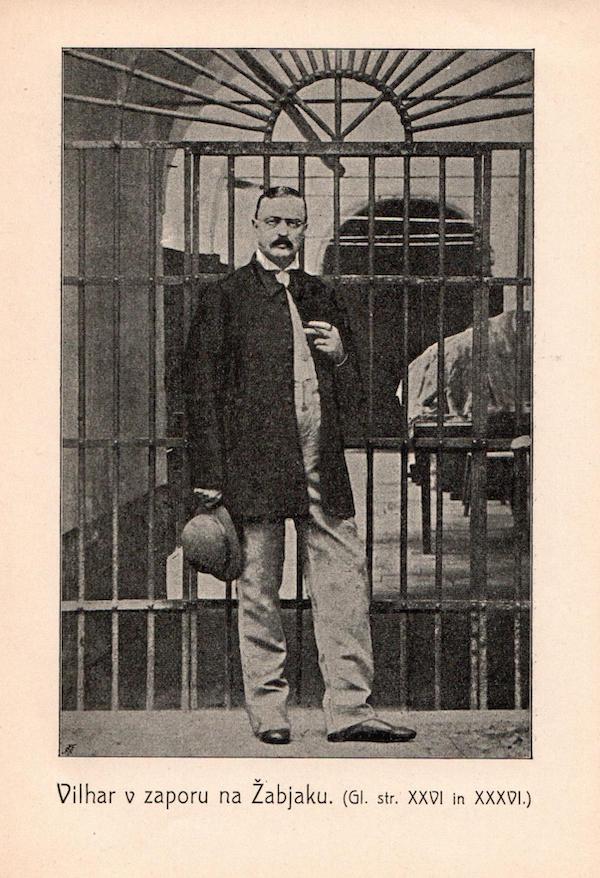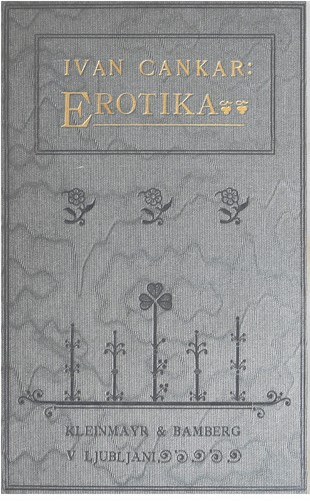Exhibition Slovenians and Imperial Censorship from Joseph II to the First World War in the National and University Library (25 May – 25 November 2023)
Download the exhibition catalogue (PDF)
Download the imagined edition of Slavinja (PDF)
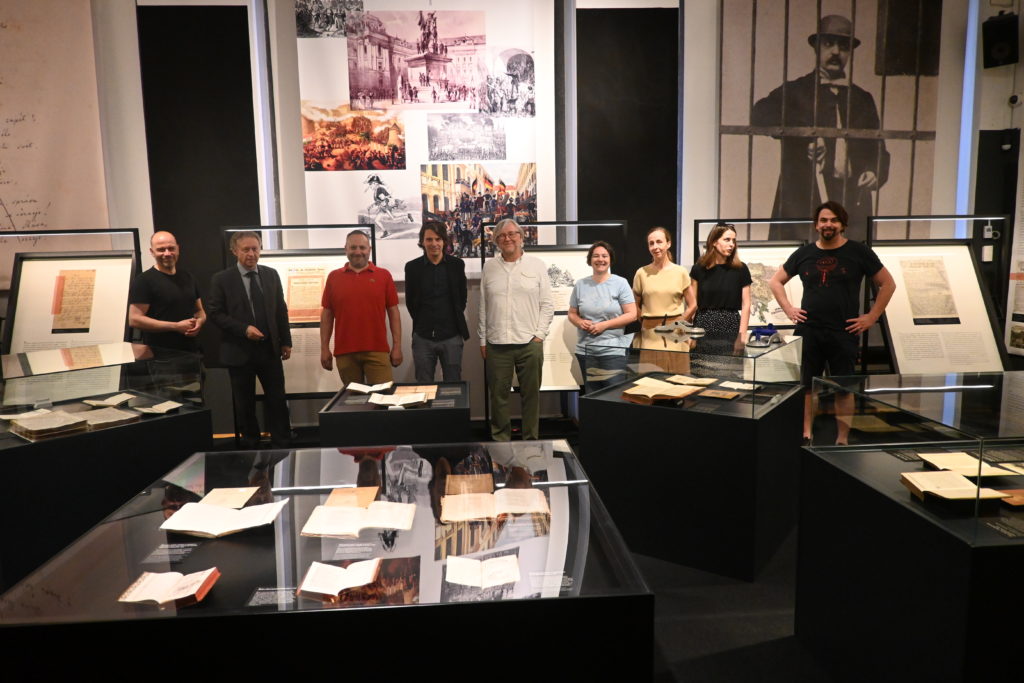
Exhibition Concept
Marijan Dović
Expert Assistant, National and University Library
Marijan Rupert
Authors of the Texts
Monika Deželak Trojar, Marijan Dović, Jernej Habjan, Marko Juvan, Matija Ogrin, Luka Vidmar,Andrejka Žejn (Znanstvenoraziskovalni center SAZU / Research Centre of the Slovenian Academy of Sciences and Arts), Andraž Jež, Tone Smolej, Tanja Žigon (Filozofska fakulteta UL / Faculty of Arts, University of Ljubljana), Katja Mihurko Poniž (Fakulteta za humanistiko UNG / School of Humanities, University of Nova Gorica), Marijan Rupert (NUK / National and University Library)
Imagined Edition of Slavinja
Andrejka Žejn
English translations
Neville Hall
Exhibition Design
Jurij Kocuvan
Illustrations
National and University Library (NUK), Archive of the Republic of Slovenia, National Gallery of Slovenia, National Museum of Slovenia, Upper Carniola Museum, National Museum of Contemporary History, ZRC SAZU Institute of Slovenian Literature and Literary Studies, Maribor University Library, National Archives of Austria, Austrian National Library
Production and Promotion
Department of Events and Public Relations, National and University Library
Preparation of the Material
Department of Protection and Restoration, National and University Library
Technical Assistance
Technical Maintenance and Investment Department, National and University Library
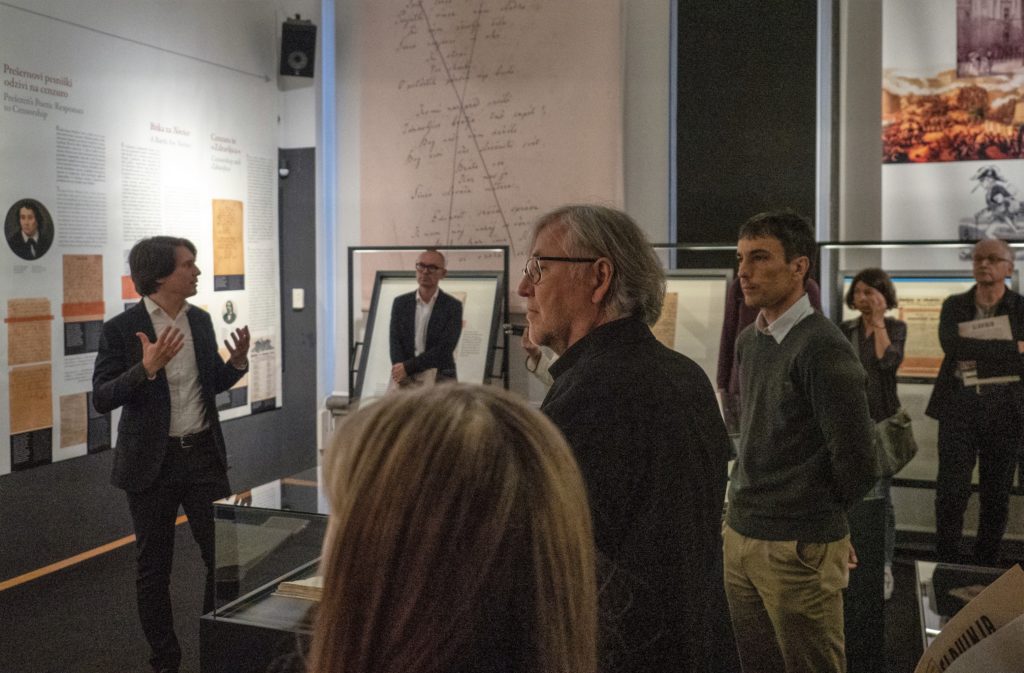
About the exhibition
Censorship is an inexhaustible and eternally relevant topic. Perhaps because it is the twin of communication, as Jonathon Green, the author of an extensive encyclopaedia of censorship, believes, or a junction where knowledge and power intersect, as Sue Curry Jansen points out in the title of her resounding book on censorship. To this we could add that censorship always appears paired with dominion. It is the governing authorities that have the power to silence and sanction those who think and write differently, and real censorship is only that which can have a serious effect on an individual or his or her work. Forms of censorship change significantly over time; its laws are different in the era of manuscripts, in the epoch of the printed book and especially in the digital age. Slovenians became well acquainted with censorship within the framework of the Habsburg Monarchy: more than three centuries passed from the publication of the first Slovenian books to the end of the First World War, and the landscape of the printed word in the Slovenian lands was dominated by imperial censorship in one form or another throughout this time. Censorship initially focused on religious issues, but with the French Revolution, politics gained a more prominent place on the agenda. Alongside religion and politics, a third great topic had a constant presence: morality. Over the centuries, our ancestors experienced the power of indexes of banned books and tested various censorship regimes; omnipresent, albeit often hidden, censorship fundamentally marked the intellectual and literary life of the past.
In the history of encounters between Slovenians and censorship, the period between the reign of Joseph II and the First World War, which brought about the end of the monarchy, was one of the most interesting and dynamic eras. During this period, which is almost symmetrically divided into two parts by the 1848 revolution, Slovenian secular literature was formed from the anthology Pisanice onwards, the first newspapers in Slovenian emerged, the national movement was established and strengthened, and international frictions intensified with the growing political differentiation. Imperial censorship had a significant role in the shaping of all of these processes: until 1848, in the form of the dominant pre-censorship, which was instrumentalised by the police-censorship network of the notorious Vormärz duo Metternich-Sedlnitzky; after the March Revolution, which for a brief but unforgettable moment widely opened the door to freedom of thought and expression, the dominant form was post-censorship, which mercilessly reined in problematic authors with the help of the judicial apparatus.
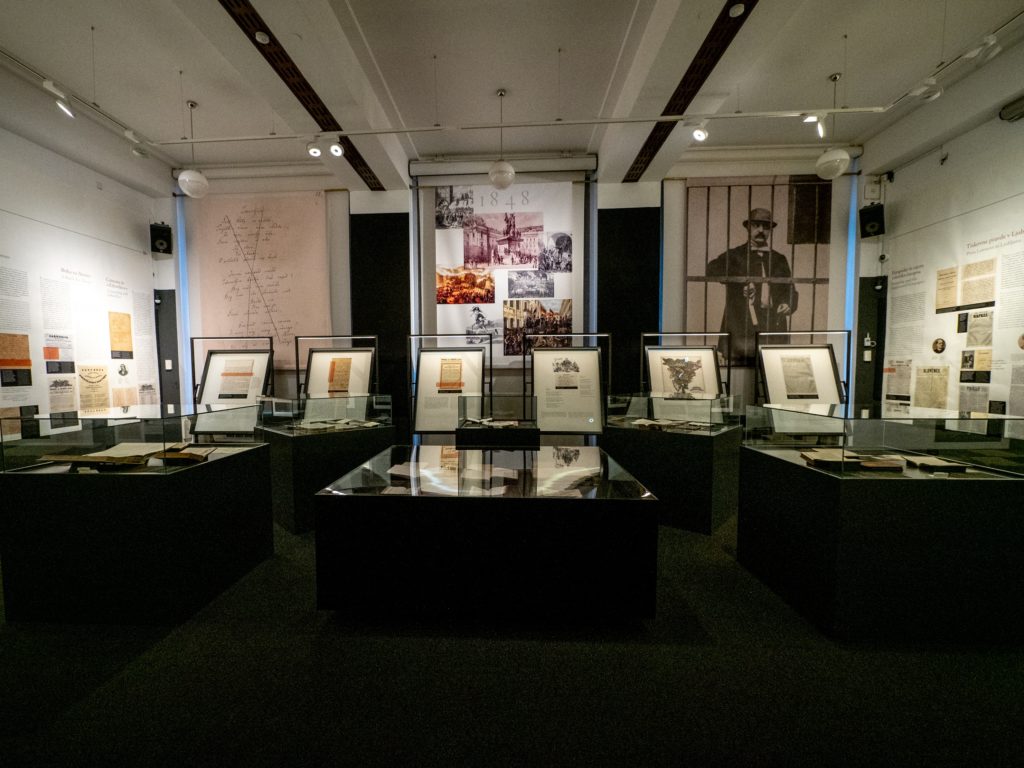
If one were to select representative (visual) images of clashes with censorship in the Slovenian lands, one of the first choices for the Vormärz period would be the first page of Zdravljica from the censored manuscript Poezije by France Prešeren, a poet who openly entered the fray with both local and Viennese censors. Repressive censorship in the second half of the century, however, is perhaps best illustrated by the photograph of Miroslav Vilhar, a writer and editor who spent six weeks in the Žabjak prison in Ljubljana in 1864, where he staged an unforgettable photo shoot behind bars. These may be the two emblematic figures of this long period, but there are at least four watershed figures, and it is by no means a coincidence that they are the leading Slovenian writers: Anton Tomaž Linhart, France Prešeren, Fran Levstik, and Ivan Cankar. These four great stories, which could frame the narrative on censorship during this period, are rounded off by a colourful collection of smaller but not necessarily less important stories: there is practically no important Slovenian literary figure in the nineteenth century who did not collide with censorship in one way or another.
We have manuscripts with red lines, crossed out passages and censorship notes, as well as incriminated articles and court files – the Austrian bureaucracy was exemplary. With this material, we can convincingly and chronologically tell the story of Slovenian authors’ encounters with censorship. However, censorship also has other, more hidden consequences: texts that, due to self-censorship, are not written at all, are written differently, lie in a drawer or end up in the fireplace, and magazines that were never carefully scrutinised by the censor because they were not even given permission to publish. Why, one wonders, is the literary and journalistic harvest in the Vormärz era so modest? How can an exhibition display that which does not exist, but probably would have existed had there been no censorship? We attempt to at least indicate the problem of the invisible effects of censorship to some extent with a special supplement: a (delayed) test edition of Slavinja, a newspaper that was not allowed to be published in the Vormärz era.
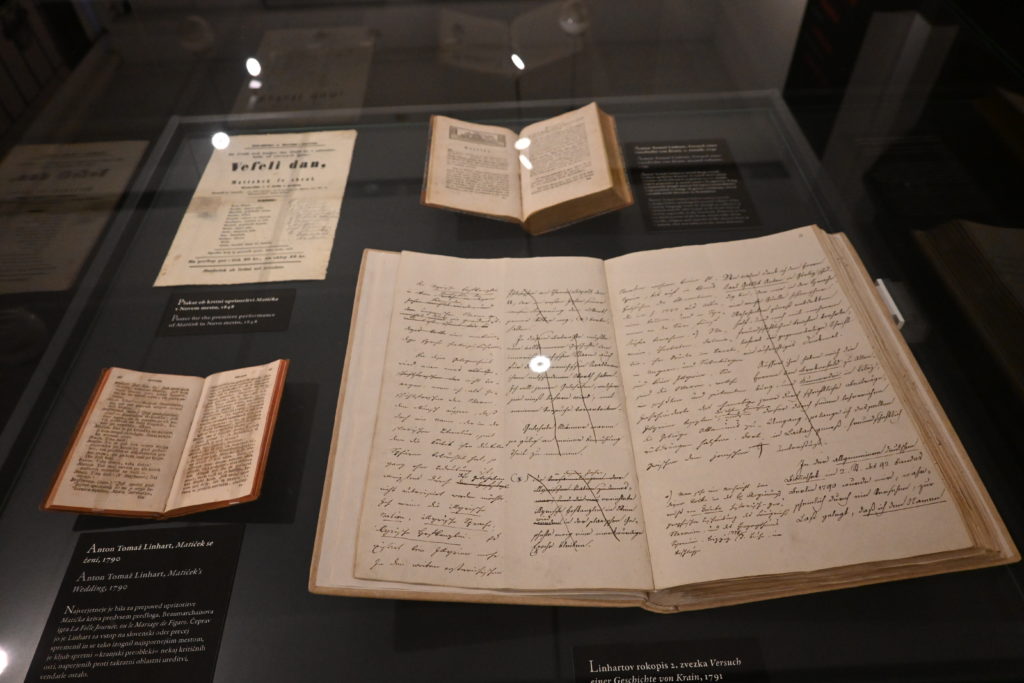
The exhibition Slovenians and Imperial Censorship from Joseph II to the First World War with the accompanying catalogue was created within the framework of the research project Slovenian Writers and Imperial Censorship in the Long Nineteenth Century (J6-2583). It was carefully designed to present a complex set of the treated problems in an accessible, non-technical way while at the same time clearly demonstrating what an important, even decisive, role censorship had in the long nineteenth century in shaping the image of Slovenian literature and culture. If the exhibition and the catalogue are able convey this message, their purpose has been achieved.
The exhibition Slovenians and Imperial Censorship from Joseph II to the First World War with the accompanying catalogue was created within the framework of the research project Slovenian Writers and Imperial Censorship in the Long Nineteenth Century (J6-2583). It was carefully designed to present a complex set of the treated problems in an accessible, non-technical way while at the same time clearly demonstrating what an important, even decisive, role censorship had in the long nineteenth century in shaping the image of Slovenian literature and culture. If the exhibition and the catalogue are able convey this message, their purpose has been achieved.
The exhibition Slovenians and Imperial Censorship from Joseph II to the First World War with the accompanying catalogue was created within the framework of the research project Slovenian Writers and Imperial Censorship in the Long Nineteenth Century (J6-2583). It was carefully designed to present a complex set of the treated problems in an accessible, non-technical way while at the same time clearly demonstrating what an important, even decisive, role censorship had in the long nineteenth century in shaping the image of Slovenian literature and culture. If the exhibition and the catalogue are able convey this message, their purpose has been achieved.
The exhibition Slovenians and Imperial Censorship from Joseph II to the First World War with the accompanying catalogue was created within the framework of the research project Slovenian Writers and Imperial Censorship in the Long Nineteenth Century (J6-2583). It was carefully designed to present a complex set of the treated problems in an accessible, non-technical way while at the same time clearly demonstrating what an important, even decisive, role censorship had in the long nineteenth century in shaping the image of Slovenian literature and culture. If the exhibition and the catalogue are able convey this message, their purpose has been achieved.
Marijan Dović
